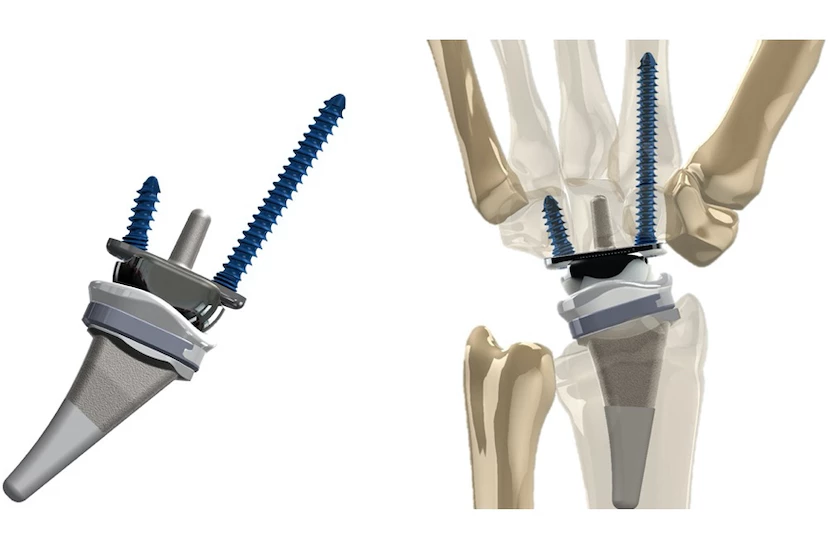While we frequently hear about the replacement of arthritic hips and knees with implants, wrists are another matter, as they're very complex joints. And although artificial wrists do nonetheless exist, a new one is claimed to provide a fuller, more natural range of motion.
Known as the KinematX Total Wrist Implant, the device was designed by hand surgeon Dr. Scott Wolfe, from New York's Hospital for Special Surgery, and Dr. Joseph J. Crisco III, who is the director of the Bioengineering Laboratory at Brown University and Rhode Island Hospital. It was developed over a 30-year period, receiving approval from the US Food and Drug Administration just this month.
Previously, it had been thought that most common wrist movements occurred exclusively on either of two planes at any one time – side to side or up and down. Artificial wrist implants were thus weren't designed to move in both of those directions simultaneously.
The doctors questioned this line of thinking, however, creating and utilizing a 3D motion analysis system to study how a natural wrist moves during a variety of frequently-performed activities. They determined that when doing things such as throwing balls, hammering nails or pouring glasses of water, the wrist in fact combines movements along both planes. This, they state, is the reason that many implants fail within several years of installation.
"Traditional wrist replacements often constrain the wrist to move in one plane at a time, and this puts stress on surrounding joints," says Wolfe. "The increased loads on the implant-bone interface often lead to prosthesis loosening and mechanical failure. In addition, traditional implants often make it difficult or impossible to return to some activities, such as tennis or golf."
By being able to simultaneously move both side to side and up and down, the KinematX is claimed to overcome such limitations. As a result, recipients should be able to regain a wider range of motion, and the implant should be less prone to failure.
Plans call for the device to be available by the end of the year, through manufacturer Extremity Medical. Wrist replacement surgery will be performed on an outpatient basis, after which patient progress will be tracked via a continuously-updated registry.
Source: Hospital for Special Surgery




